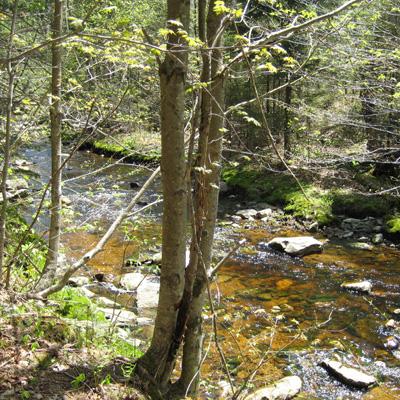Determination of Atmospheric Deposition and Nitrogen Saturation Status in Class I Wilderness Areas of the Northeastern United States: Refining Natural Abundance δ15N18O3 Techniques

Nitrogen and sulfur emissions to the atmosphere have led to increased deposition of these elements onto forests of the northeastern United States. National atmospheric deposition monitoring networks are sparsely distributed throughout the nation. Despite the need for accurate estimates of nitrogen inputs, few data are available for the Northeast. NSRC researchers determined rates of total atmospheric deposition on sites within Class I wilderness areas of the Northeast and assessed the nitrogen saturation status (point at which full capacity for nitrogen is reached) of watersheds in these areas.
Researchers installed ion-trapping resin collectors in two forested watersheds and two open areas of the Lye Brook Wilderness area in Vermont and in two forested watersheds adjacent to the Great Gulf Wilderness area in New Hampshire. They measured nitrogen, sulfur, and stable isotopes (variations of an element) of bulk chemical deposition and throughfall (precipitation falling through tree canopies). Streams were also sampled.
Sampling results show that rates of nitrogen input vary, with highest rates found in the open and lower rates found beneath coniferous and deciduous tree canopies. Surprisingly, researchers discovered no significant patterns of nitrogen inputs or stream concentrations of nitrogen with change in elevation. Nitrate (form of nitrogen) in streams had isotopic fingerprints more like those produced microbially (by bacteria) than like those found in atmospheric deposition. This finding suggests that microbial processing of nitrogen, in the canopy or soils, is still ecologically significant in these forests, and these watersheds are not currently experiencing nitrogen saturation.
